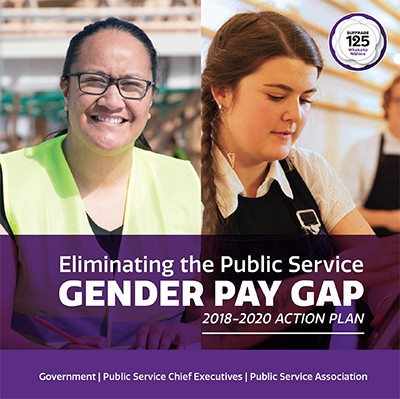- Issue date
- 26 July 2018
At least half of the senior leaders in the public sector will be women by the end of 2019, and workplaces will be flexible “by default” are among goals in an Action Plan to eliminate the gender pay gap in the public service, launched today.
Hon Chris Hipkins, Minister for State Services, and Hon Julie Anne Genter, Julie Anne Genter launched the plan today, at Auckland Museum’s Are we there yet? Women and Equality in Aotearoa exhibition.
“The Action Plan is a major step forward in eliminating the imbalance in pay between men and women in the public service – a key commitment between the Labour and Green parties,” says Ms Genter.
“The Action Plan will accelerate action across the public service to address the underlying workplace culture issues that drive the gender pay gap,” says Mr Hipkins.
“This is a critical piece of work that ensures everyone in our public service is paid fairly for the role they do."
The four key focus areas in the strategy are:
Equal pay
- By the end of 2020, all agencies will have closed any gender pay gaps within the same roles.
Flexible work by default
- By 2020, all agencies will be flexible-by-default.
Bias and discrimination
- By the end of this year there will be no gender pay gaps in starting salaries for the same roles.
Gender-balanced leadership
- By the end of 2019, women will hold at least 50 percent of leadership roles in the top three tiers of leadership.
“Government has a leadership role to play to ensure that women are treated fairly. As responsible employers, government can demonstrate what works and get the private sector on board. This plan sets the direction of travel for government departments to start fixing the pay imbalance,” says Ms Genter.
“The State Services Commissioner has committed to ensuring that all chief executives will see substantial reduction in the gender pay gap for their agency. Each agency is making their own plan as they all face different challenges. The first publication of each agencies' annual plan will be published by the end of this year.
“All agencies will undertake standardised measurement of gender pay gaps for the same roles so these can be corrected in the next remuneration round.
“In 2018, it's unacceptable that women are still concentrated in lower-paid occupations, under‑represented in leadership while at the same time doing the majority of unpaid caring responsibilities,” says Ms Genter.
“This plan brings to life the Gender Pay Principles launched at Parliament earlier this month. The gender pay gap currently in the New Zealand Public Service is 12.5 percent – but not for much longer,” says Mr Hipkins.

